My beginnings were in the realm of home theater and I used to host movie nights every week. I wanted thunderous bass and was recommended HSU Research by, oddly enough, my local speaker repair guy. It has been over 7 years since I’ve purchased the HSU VTF-2 MK3 and they remain in my current Atmos (9.1.2) surround system. I tacked on some Buttkickers and this system has incited more palms over beating hearts than I could count. Their new award-winning VTF-3 MK5 HP subwoofer is equipped with variable-Q controls which allows one to adjust the tightness of the bass. I may need to upgrade.
HSU Research is known for their very affordable and high-performance home theater packages. For friends who want a home theater setup that will enjoy for years, HSU is my top recommendation. You get a lot of immersive fun for your money.
A few readers have requested a review of the HSU Research’s CCB-8 bookshelf speakers. These speakers have to be set up a specific way so I figured I’ll just pay them a visit and hear them in person in a properly treated room. Anaheim was just a 40-minute drive away so I scheduled an appointment and off I went. Upon arrival, I was greeted by the Dr. Poh Ser Hsu himself (such an amiable guy) and was immediately introduced to the demonstration room.
Build & Design
- Finishes
- Satin black – $369/each, $699.00/pair
- Rosenut (Real wood veneer) – $449/each, $859.00/pair
- Magnetically attached grille
- 8″ woofer, polypropylene cone
- Cast aluminum basket
- Treated-cloth surround
- 1″ ferrofluid aluminum dome tweeter
- 1″ thick medium-density fibreboard (MDF) cabinet with an aluminum heatsink at the rear.
- 2 rear ports with plugs provided
- 5-way, gold-plated binding post
- 2″ diameter, higher turn density, edge-wound voice coil
For technical specifications, please visit their product page.
First and foremost, these didn’t look like the typical speakers you’d place on your desktop. They’re 15″ in height, 10.5″ wide, and 12″ deep and weigh 22 lbs each. The CCB-8 could be oriented upright or on its side (there’s no off-axis lobing that occurs with typical multi-way speakers). Given their coaxial design with phase alignment of the drivers, they don’t require more distance to coalesce like other bookshelf speakers. They should work fine in near-field applications, however, in my case, I would have to get a wider desk in order to incorporate these on the sides of my dual LCD monitors. It is also recommended to supplement the CCB-8s with a subwoofer. HSU Research provides a selection of packages for this.
As far as appearance, the yellow cone movement is a bit overdone but the rosenut finish with the grilles on looks quite elegant.
The constant directivity coaxial design of the CCB-8 is most interesting. Most coaxial speakers have the mid/tweeter driver concentrically on the woofer itself. The tweeter of the CCB-8 is actually seated far in the rear behind the magnet of the 8″ woofer. The pole piece and cone are actually used to control the dispersion of the tweeter. The crossover is designed to time align the drivers so that both drivers push sound synergistically. Speaker designers have different approaches to time-align all the drivers. The listener is always the same distance away from the woofer/tweeter on the same axis, which means sound always arrives at the same time.
With traditional, point-source, multi-way speakers, you hear more of the driver you’re closest to so if you’re listening off-axis, there will be crests and troughs at various frequencies. As I listen horizontally and vertically, the sound is still balanced and well-composed. The reason why these coaxial designs aren’t as common comes down to cost due to the complexity of the manufacturing process.
Placement & Positioning
The CCB-8 was designed to be heard 15-degrees off-axis. So if the speakers are facing you, toe them in an additional 15 degrees. This creates a stereo image across a wider listening area (time-intensity trading) which aims to remove the “sweet spot” while preserving imaging. Dr. Hsu had me move around the room and sure enough, acoustic pieces maintained their position in acoustic space. Standing closer to the left speaker didn’t make the left speaker louder since the right speaker was more direct towards me. This time-intensity trading is only possible with this constant directivity design and wouldn’t work well with speakers with wider dispersion patterns.
Music
When Dr. Hsu first started his demo, I asked if he could turn off the center channel. He smiles. “Only the left, right, and VTF-3 MK5 speakers are on.” Even after confirming that only the left and right channels were active, it was still difficult to believe. Simply one of the best phantom centers I’ve ever heard.
Shattered (feat. Aaron Neville) – Linda Ronstadt
First thing I noticed was the imaging capabilities of this speaker. Piano, drums, and vocals are laid out not just accurately on the horizontal plane but deep within and all around the listening room. Ronstadt’s voice is dead center while the piano plays gracefully to the side. Drums are impactful and full during the latter part of the recording. There are a warmth and sweetness that fills the room that I haven’t experienced even in my much more “involved” near-field setup.
Perdidos En Paris (Due Come Noi) – Jose Luis Rodriguez
Room acoustics are projected all around the room while layering and separation of the various performers are accurately placed in the sound field. The richer and more full-bodied tone is undeniable…and addictive. Strings sparkle, vocals are sweet and intelligible, and low-end has an enveloping rumble. A surprisingly dynamic and atmospheric sound to say the least. The soundstage was huge.
Auberge – Chris Rea
As the footsteps come in from the left, moves towards you, and then to the right, there are a continuity and weight that’s eerie yet articulate. When the bottle spins around the floor, it can be visualized and actually sounds like a real bottle. Great demo.
These Bones – Fairfield Four
This track is played at every audio trade show to display bass depth and resolution. Voices were incredibly deep, weighty, and well layered and imaged without sonic clashing. The resolution wasn’t as obvious in the lower mids and upper-bass regions but this could be due to the sources being used (a 20-year old CD player and simple AV receiver). Again, a room-filling dynamic sound with incredible height and depth.
Sleep Like a Child – Joss Stone
The kick drums hits with amazing authority while her vocals are perfectly centered and well contoured. A very involving and emotive presentation that breathes into the room. The timbre and tone is quite a treat with these speakers. Voices are sweet, well-extended, and cymbals have proper shine. The only thing it’s missing is a deeper sense of clarity which is most likely the fault of the sources and not the CCB-8s themselves. I’ll find out soon enough.
Film
In this configuration, left and right CCB-8s were active along with the center CCB-8 channel. This coaxial design was meant to be the perfect center channel. Most center channels will have 4-5 drivers arranged symmetrically. This emphasized the benefit of a sweet spot and could possibly cause comb-filtering in a room. The coincident nature of the coaxial driver mitigates this problem. After shifting to left and right seats, I could confirm this.
Dr. Hsu spun up Christopher Nolan’s Interstellar and I sat back for the experience. The VTF-3 MK5 placed behind my seat were kicking my ass during the scene where Cooper’s spacecraft was going through debris while trying to perform the gravitational slingshot. The center CCB-8 was very clear and weighty. I didn’t experience any harshness or brightness at all during this demo. The side CCB-8s blended well with the other in-walls to create a dynamic, heart-racing, and immersive movie experience.
In my personal home theater, the sweet spot is critical for object-oriented sounds such as Dolby Atmos and DTS:X. Room correction doesn’t do much to alleviate the experience for side listeners. It would be interesting to hear the CCB-8s in this application.
Final Thoughts
During the review, I kept forgetting these are only $699 a PAIR. Their Hybrid 1 2.1 packages with the VTF-1 MK3 subwoofer is only $1,069. Given the fact some of us spend this much on a USB cable, the amount of value you’re getting cannot be understated. The HSU Research CCB-8s are dynamic monsters and image better than some much pricier speakers I’ve heard. There’s also a visceral impact and nuance I can’t experience with my own Omega Compact Alnico 6″ woofer. I also enjoy the thicker tone and warmer sound of these speakers.
Keep in mind, this incredible sound comes from cheap speaker wire from Home Depot, a 20-year-old CD-player, and a consumer-grade AV receiver. I think my current nearfield rig exceeds $40,000. Although much more resolving and textured, it does provide a moment of reflection. It also sparks a curiosity as to what it could do for the CCB-8s.
The CCB-8s are very sensitive (94 dB), which means they could technically be driven by the Chord DAVE (but isn’t something Dr. Hsu would recommend due to large impedance dips). I’ll probably try anyway. If these better sources and cabling could provide more acoustic clarity and air for the CCB-8s…they might actually replace my Omegas.
I’m in the middle of expanding my desk to accommodate these larger speakers. Seriously.

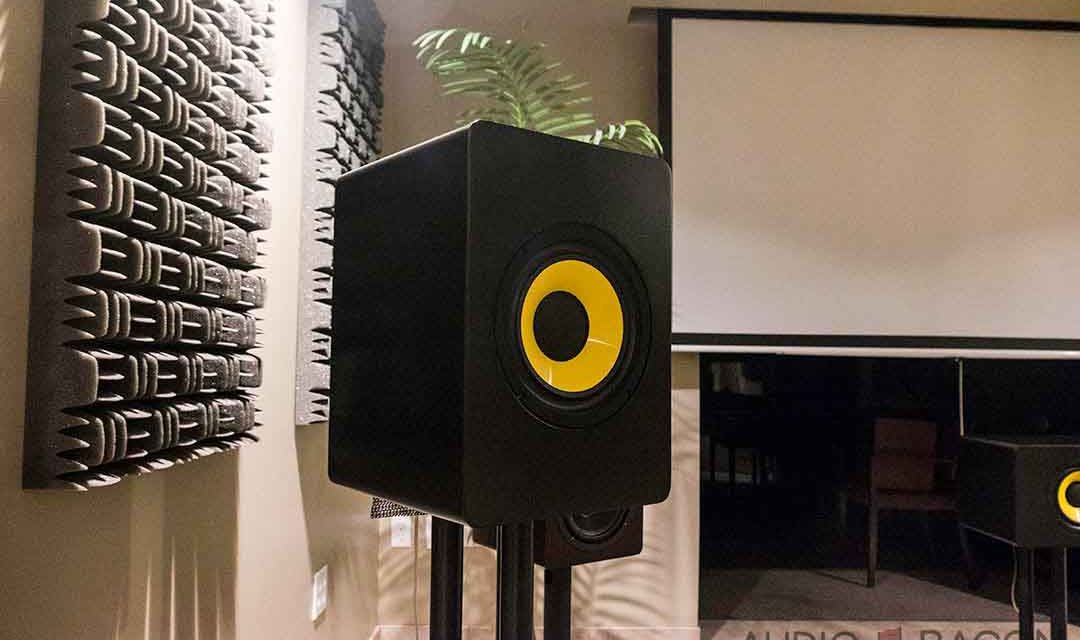
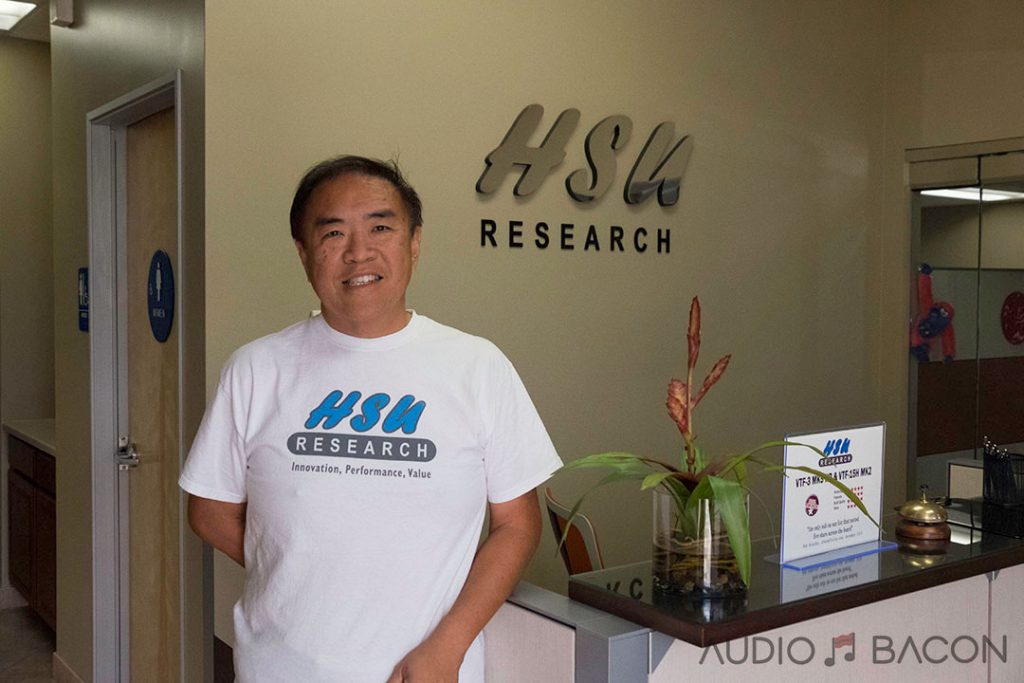
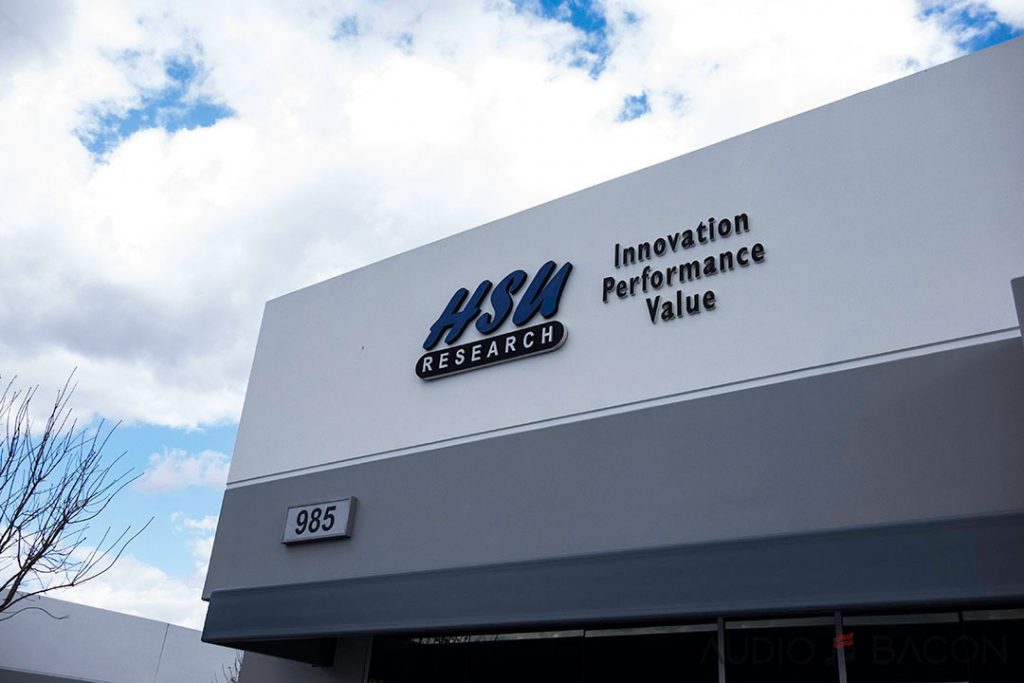
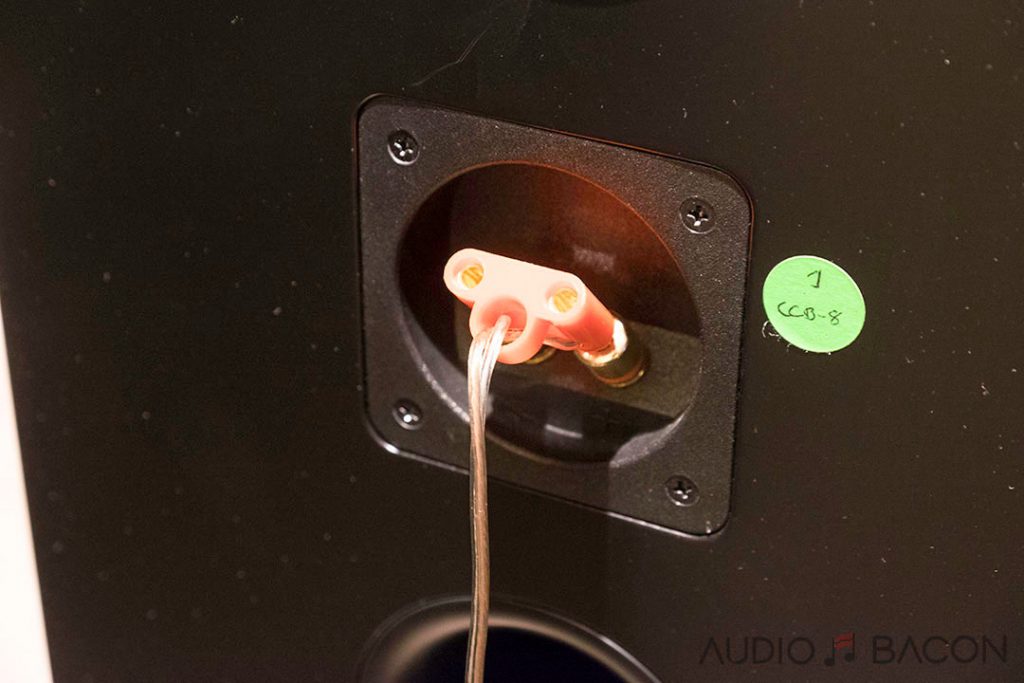
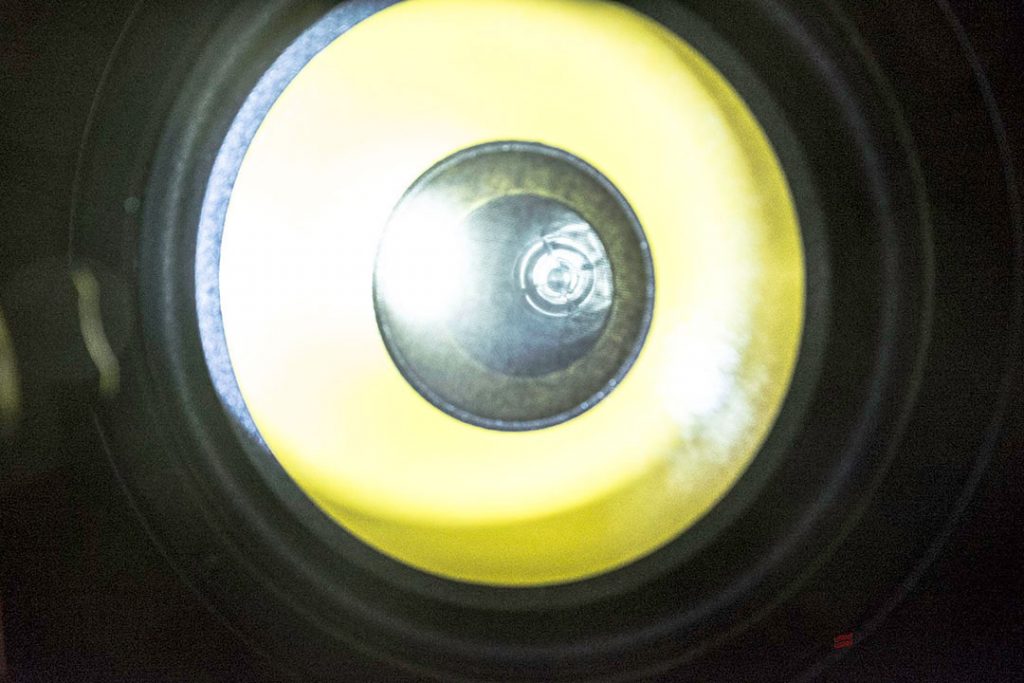
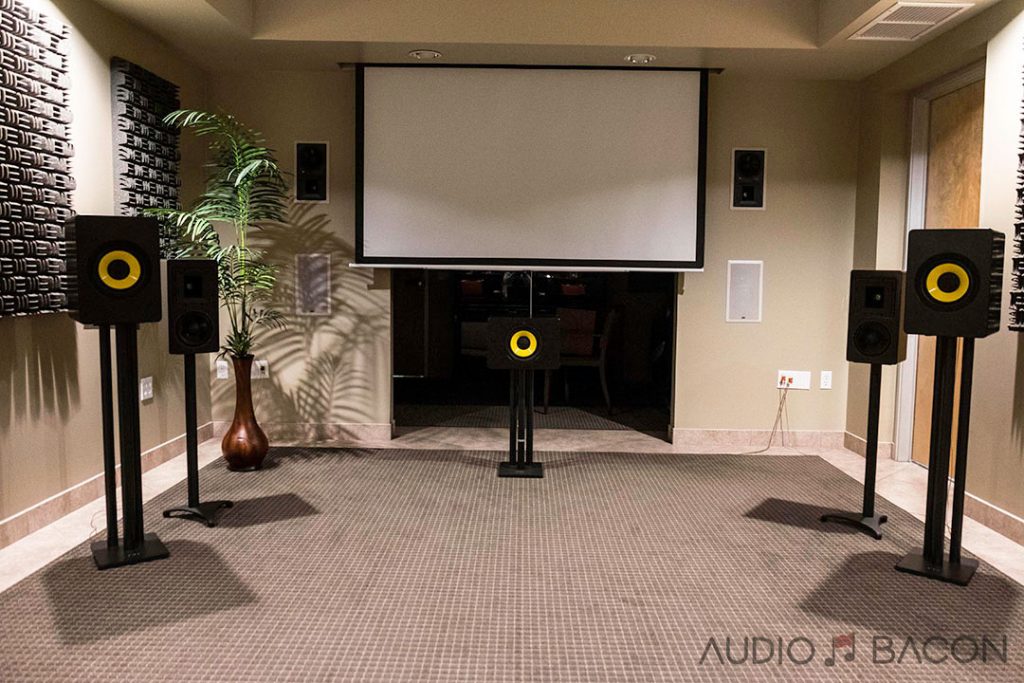
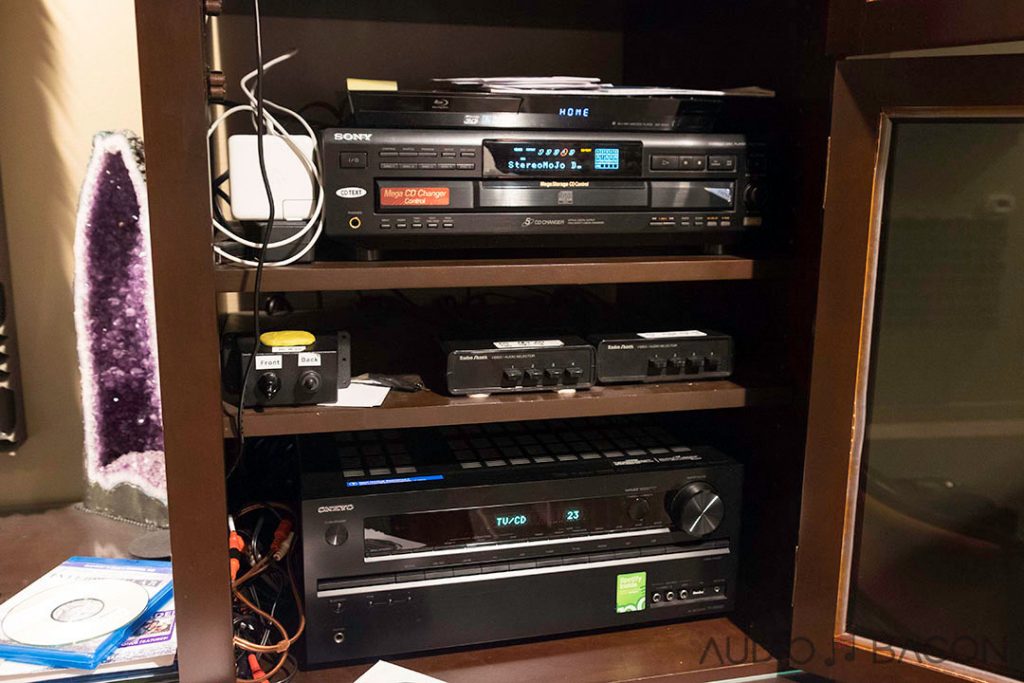
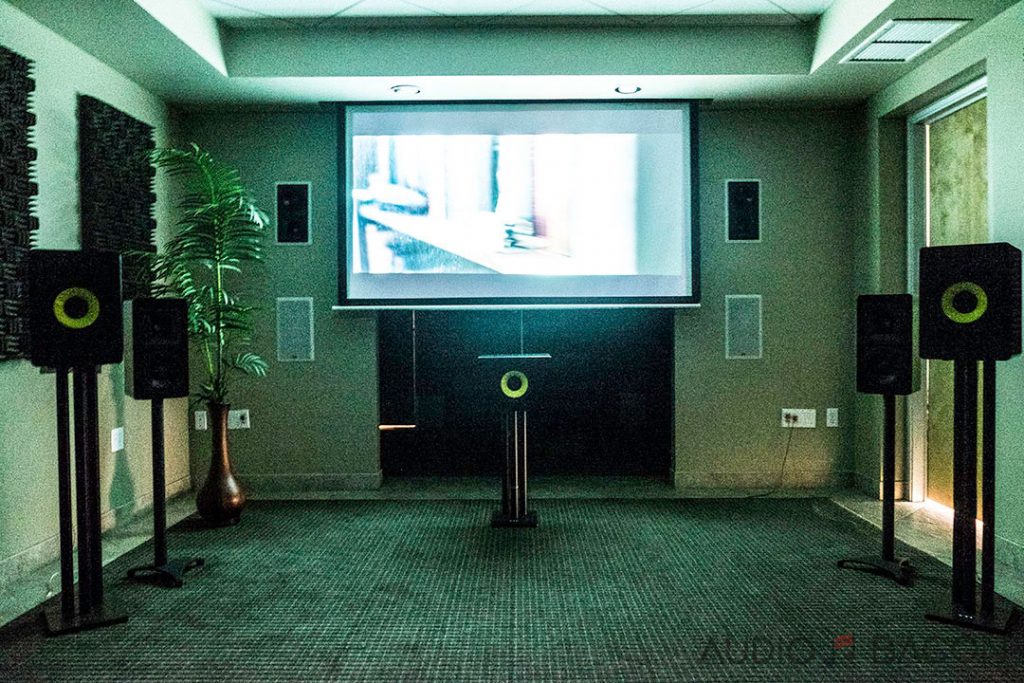
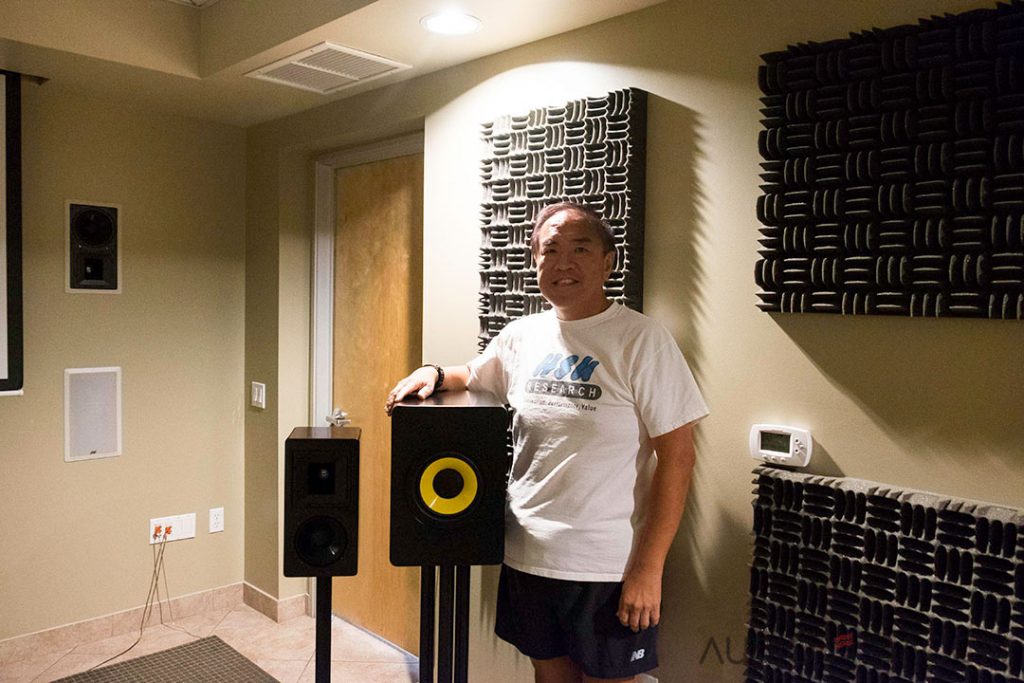




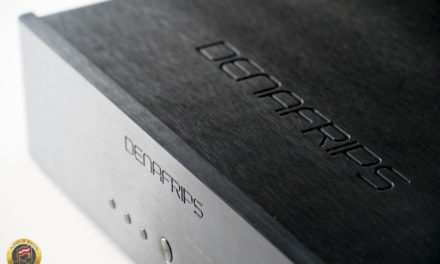

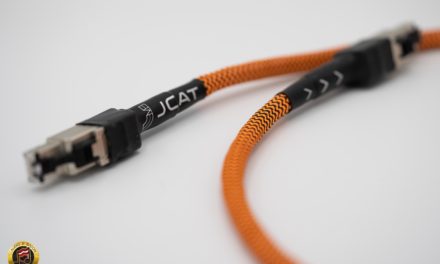

nice read, sir.
Can this speaker be plugged and placed into a bookself cell ? I need L/C/R speakers for new 5.1 or 5.2 HT and requires a bookcase placement. This speaker could be perfect if it can perform in this application. I already plan to use a Hsu sub. Ceiling surrounds req’d. 13x13x10 listening area but open to surrounding area. 80% movies/TV, dialogue important but loudness is not. 20% soft rock.
I have a similar requirement to you but my room is larger (16x16x16). These work well even in bookshelf cells and the dialog is crystal clear when played very softly or loud. I have them configured with one port open. I am also using a HSU VTF15H-MK2 with it all receiver managed crossover at 60hz and it all sounds very nice. I am very happy with the sound.
Hi. Have you tried these in phantom center mode in your personal home theater? I’m interested in purchasing these, but, if I don’t need to get a center, I don’t want to get one. Thanks!
I haven’t, but as long as you position them correctly…I don’t see why you wouldn’t get a decent phantom center.
Nice reading, i agree.
However, how about classical music? It’s easy to render 6-7 instruments, but a dense Mahler symphony, or even Haydn, is quite, well, way different. Everyone is talking about bass, but how about smooth violin groups or the silvery riding cymbal in swing jazz? Too, speaking about HT, crisp, undistorted speech, due to the fact that almost all dvds or blu-rays are recorded differently. Some movies’ sound track is extremely dense, where effects vectorially directed are superimposed on the dialog and music. Of course, all of these depend on the richness in upper harmonics that amalgamate in the sound scape.
I wonder how would these speakers behave in the situations described above?
Thanks for reading, John.
If it is designed to be listened to 15 degrees off axis, then how is it also “the perfect centre channel speaker”?